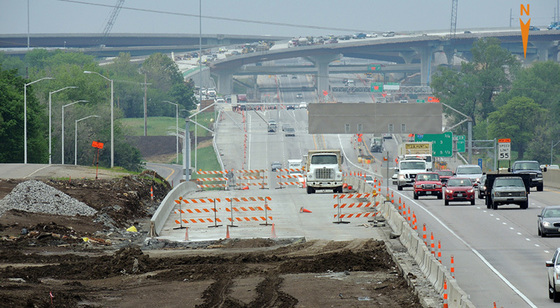|
Innovation of the Month:
3D Engineered Models: Schedule, Cost and Post-Construction
The Every Day Counts (EDC) innovation of the month for May is 3D
engineered models, which depict highway facilities in an
accurate, easy-to-view way. After promoting this technology for design and
construction in EDC-2, the Federal Highway Administration is encouraging states
in EDC-3 to expand its use to other project delivery phases and add 4D and 5D to
their modeling practices.
As a result, at least five states are using 3D models in
post-construction and program-level applications, such as creating asset
inventories and as-built records. Six states are exploring 4D and 5D modeling
by adding schedule and cost data to 3D models to improve constructability and project
management and provide more accurate cash-flow estimates.
 Already, 25 states and Federal Lands Highway are deploying 3D engineered models for construction or planning to make it a standard practice. Three states—Iowa, Michigan and Missouri—have mainstreamed the practice.
Watch sessions in the 3D Engineered Models webinar series to learn more about 3D, 4D and 5D models.
Contact Chris Schneider of FHWA’s Office of Infrastructure or David Unkefer of FHWA’s Resource Center for information or technical assistance.
|
Illinois Signs Agreement on First Responder Training
Leaders
of the Illinois State Police and Illinois Department of Transportation signed a
revised joint operational policy agreement on April 19. The new agreement—which
updates a 2004 agreement—fosters greater cooperation by clearly establishing
each agency’s jurisdictional responsibilities. It strengthens the framework and
components of traffic
incident management responder training to prepare the state’s first
responders to clear traffic incidents quickly and safely. It also clarifies
public notification procedures for crashes and adverse weather conditions.
Kansas Makes Progress on Johnson County Gateway
The Kansas Department
of Transportation continues to make progress on the Johnson
County Gateway, the state’s first major design-build project. The project
is designed to improve safety and relieve congestion on the I-435/I-35/K-10
interchange. The westbound I-435 to southbound I-35 flyover interchange ramp is
open to traffic, and the eastbound to northbound ramp is set to open in mid-May.
Construction on the $288 million project is scheduled for completion by the end
of 2016.
 The new diverging diamond interchange at I-35 and 95th Street means new ramps and a new configuration on the west side. Photo: Kansas DOT
Missouri Shares e-Construction Experiences With Illinois
Representatives
of the Missouri and Illinois Departments of Transportation conducted an e-Construction peer
exchange on April 26. After Illinois DOT staff provided an overview of the
agency’s vision to adopt paperless business practices over the next two years,
Missouri DOT staff discussed the e-Construction technology it uses. A software
demonstration by a Missouri DOT resident engineer provided a hands-on
perspective of e-Construction on an active project.
Washington, D.C., Plans Neighborhood Bike
Network
The District
Department of Transportation and FHWA collaborated with the Royal Netherlands
Embassy on a ThinkBike
workshop April 21 and 22 in Washington, D.C. The workshop brought together
Washington-area transportation planners, Dutch bicycle transportation experts
and cyclists to design a bike network plan for a neighborhood in the nation’s
capital. The group focused on intersection conflicts, bike parking and road
diet options. ThinkBike workshops are designed to help U.S. communities
improve bicycle infrastructure.
|